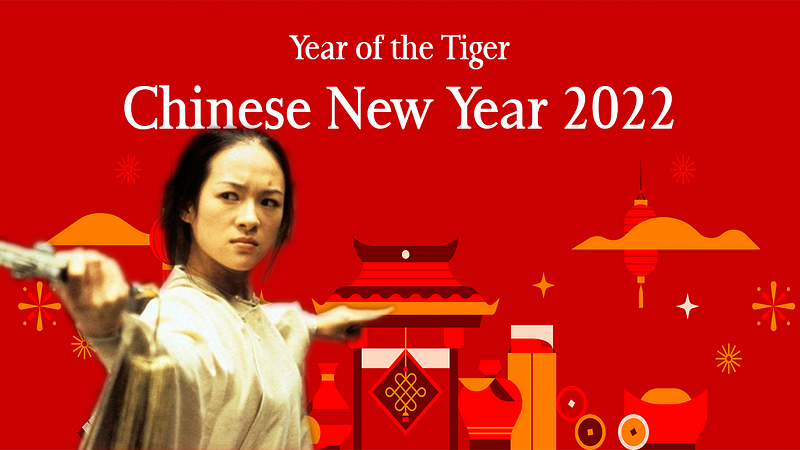Coincidence or not, every Chinese New Year, the price of crypto, and especially Bitcoin, has gone on a downward trend. This trend is known as the “Chinese New Year Dump”, and some have issued theories about this being a multi-year Bitcoin crash pattern.
Regardless of your predictions and personal theories, the proof is in the pudding. So let’s dig it out.
The Chinese New Year Dump
If you’ve been paying attention to financial markets in the last few years, you’ve probably heard of the “Santa Claus rally,” when stock markets rise in December. Similarly, some have observed that bitcoin’s price seems to be affected by the Chinese New Year. While it looks like an abnormality at first, it can make sense if we look a bit more into these market trends.
Every new year is marked by a steady pattern of a decline in BTC prices. This continues through the Chinese New Year, which falls at the end of January or beginning of February. The downward trend is typically followed with a slight recovery after the holiday concludes.
At the same time, there are spikes in the Chinese Yuan and bitcoin trading volumes, which means that despite the unfavourable Chinese regulations, there are many crypto investors in China.
Chinese New Year & the Hongbao Tradition
The Chinese New Year’s date changes each year according to the Lunar Calendar. This is different from the Gregorian Calendar that most countries use. While each Chinese New Year has different dates and a different symbol, it usually takes place between January 21st and February 20th, when the new moon occurs.
For instance, in 2022, the Chinese New Year started on February 1st. The start of the Chinese New Year is marked by huge celebrations all over the world, in the major Chinese communities. But over the past few years, some have started to issue theories about how the Chinese New Year influences bitcoin’s price. One particular Chinese tradition can be connected to BTC’s price.
One of the essential traditions of the Chinese New Year is the Hongbao tradition (translated as “red package”), which are basically small red envelopes. Chinese people give these cash-containing red envelopes to their loved ones. These red packages, which are intended to symbolise luck and prosperity, are the one time a year in China that cash gifts are acceptable.
Tradition dictates that married couples should distribute red packages to unmarried young adults, the elderly, and service personnel. Managers and executives of companies should give money to their employees. Some packets can be as high as the monthly wage.
Since most people still stick to the Hongbao tradition, it is possible that it can trigger a noticeable cryptocurrency sell-off, as Chinese crypto investors might sell some of their crypto funds to pay for their Hongbao packages. This could cause bitcoin’s prices to fall as does the asset’s exchange volume.
Examining China’s Crypto Sell-off
Since most people start to prepare for the Chinese New Year a few weeks in advance, that’s when bitcoin prices almost always fall. But is there really a Chinese New Year dump? You be the judge of that.
In 2017, BTC’s price dropped 30% from $1,130 down to $784 just before the festival.
In 2018, bitcoin’s price dumped from more than $18,000 on January 6 to reach $6,800 by February 6.
In 2019, bitcoin’s prices fell from $3,491 just before the Chinese New Year to $3,397 during the holiday.
In 2020, prices dropped again before the Chinese New Year, breaking the initial resistance of $8,300. It then plummeted below $8,300 the next day. The prices stagnated on the 2nd day of the Chinese New Year holiday, as prices only began to rise on the final day.
The tides turned in 2021 with a steady increase from $32,000 to $39,000 during the first week in February and a massive 2-day rally to $48,000 the days before the festival. However, prices began to retrace to $46,200 following the Chinese New Year dip trend. This, however, did not wipe out the pre-Chinese New Year rally.
Chinese New Year & Bitcoin’s Trading Volume
The Chinese crypto inventors tend to prefer Binance and Huobi as their personal choice for centralised exchanges. In the past few years, these exchanges show lower trading volumes during the Chinese New Year holiday celebrations. In fact, trading volumes tend to decrease during other Chinese national holidays, such as the Golden Week that happened in October, as well.
At the same time, it’s important to note that the crypto market accommodates trading bots. Actually, a huge chunk of the market volume comes from these trading bots. While most do not know this, most Chinese and other Asian countries shut down most of their operations during national holidays, which leads to a decline in trading volume that can be visible on major CeFi exchanges.
Although trading bots and algorithms are automated, humans must still monitor the daily operations to ensure there are no errors.
Another consequence of the China-wide close-downs is a more volatile and less liquid cryptocurrency market.
Did the Chinese New Year dump happen in 2022?
This year, the situation could be slightly different because China’s impact on the crypto market has been greatly reduced with China’s latest ban on cryptocurrency mining. While bitcoin’s price did decrease in the weeks leading up to the holiday, bitcoin (along with most of the cryptocurrency market) has been on a steady decline since early November, which might mean that this dump is not related to the holiday festivities in the world’s second largest economy.
As we said before, you can be the judge of that. Yesterday, February 1st, was the first day of the Chinese New Year. At the time of writing, bitcoin’s price was down 43% from its November 2021 all time high of $68,789.63; it was down 18.9% from one month prior, and down 11.35% in the last two weeks, from $42,466.39 on January 18th to $37,712.66 on February 2nd.
Again though, this recent dump may be unrelated to the Chinese New Year. Huobi, Asia’s biggest exchange, has stopped retail trading in China. Bitcoin has been moving from Asia to Europe and the US for some time. The final effect of the Chinese cryptocurrency ban is now underway. Huobi’s share in the global open interest has dropped to 2% after gradually eliminating Chinese mainland users. This is a decrease from 20% at its peak on February 20, 2020. Naturally, China’s crypto mining dropped dramatically after the September 2021 ban.
While China was once the center of bitcoin mining, with a hash rate of over 65%, China’s aggressive actions against all crypto mining activities resulted in many miners leaving the country or closing down their operations. The good news is that a lot of the mining equipment has been shipped overseas, especially to the US. Over $400 million worth of mining equipment was shipped from China to America. China’s influence over bitcoin may soon become negligible.
Looking Forward…
Some might say we are currently experiencing a bearish market, as crypto prices have plummeted since December 2021. The mass sell-offs that started in early November 2021 have caused retail investors worldwide to panic sell and put off potential new investors.
We hope that there will be fewer dips associated with the Chinese national holidays in the future. For now, we must wait and see if cryptocurrency prices recover after the holidays end.
While nobody can predict the future, we know you all love to issue theories for the past trends of the market. Ready to make your own calculations about the last Chinese New Year dumps?
Here are the exact dates of recent Chinese New Years:
- 2016: February 8 to February 10
- 2017: January 28 to January 30
- 2018: February 16 to February 18
- 2019: February 5 to February 7
- 2020: January 25 to January 27
- 2021: February 12 to February 14
- 2022: February 1st to February 3rd
Let us know if you think that the Chinese New Year is affecting the cryptocurrency market. Don’t forget to follow us on social media, and join us across social media to stay up-to-date on all things QuickSwap — Polygon’s most-established DEX.
Twitter | Telegram | Announcements | Medium | Discord | Reddit
By QuickSwap Official on February 2, 2022.
Exported from Medium on May 2, 2023.












